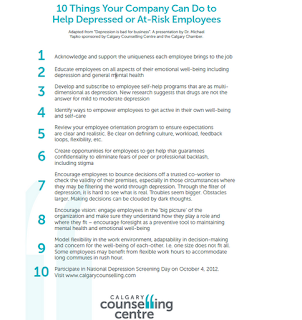The Value of Hiring Persons With Disabilities
Tuesday, October 30, 2012
We are often approached by employers who would like to know what they can do to improve their diversity and inclusion practices in their organization. Many times, they want to ensure they are being compliant with the legal requirements set out in Alberta which prevent discrimination in the workplace. Other times, they are interested in diversifying their workforce because they feel it is the right thing to do, and want to create a company where every person has the ability to succeed. Both of these motivations are related to feelings surrounding the equal opportunity to work, even if one is legally mandated and the other comes from our own individual perspectives about equality.
At Champions, we know that giving every person an equal opportunity to work isn't just a requirement of the law, and basic human right, but it can also add tremendous value to your organization. Considering potential candidates with disabilities, and hiring the right person for the right job, can dramatically improve your company's bottom line. There are 4 reasons why this is the case:
1. Employees drive your business
Whether you are a publicly traded corporation, a small business, or a non-profit organization, the chain of all your relationships begins in one place: your employees. Employee satisfaction, capability, productivity and commitment are all fundamental to meeting your organization's goals. This may be revenue, growth and profitability for businesses, or quality provision of services for non-profits. Right now skilled staff members are hard to source - so it's important to find the right person for the right job, and keep them. Utilizing the talent pool of persons with disabilities will provide a unique perspectives to your company and help fuel innovation. A diverse workforce will also identify you as a leader and employer of choice in your community.
2. Value of Diversity and Inclusion
A diverse and inclusive workplace comes with numerous benefits. Productivity can increase as different experiences and backgrounds inject energy and creativity into your workplace. A healthy culture at work improves the quality of life for everyone, and the more people care, the better the product. Improved morale can increase your employee loyalty and raise the retention rate of your current workforce. Finally, a diverse and healthy workplace culture will attract potential candidates to your organization as you are identified as an employer of choice.
On the other hand, not having the right policies and supports in place can cost you money, and not just from the lost benefits from the above mentioned improvements. In 2010-11, the Alberta Human Rights Commission had 723 complaints filed with over 1916 grounds of discrimination cited. 44% of these citations were related to physical or mental disabilities. The cost of defending oneself to a Human Rights Tribunal or court can be exorbitant. Recently, the University of British Columbia attempted to recover $150 000 in legal costs incurred from a complainant - after the UBC successfully had the complaint dismissed! Not to mention that the case hadn't even been to a hearing and the fees were associated with preliminary matters only.
3. Hiring and Retention Costs
The costs associated with recruiting, hiring and retaining a new employee can be hefty. Advertising, time costs of an internal recruiter, interviewing, background checks and other pre-employment assessment tools can quickly accelerate the costs related to hiring. After hiring comes training, and workplace integration, which also add to the costs incurred by an employer. While every organization is different, a typical mid-level manager requires 6.2 months on the job to reach their break even point with the costs associated to their hiring.
Hiring the wrong person and having a high turnover rate of staff can be a costly endeavour. One way to avoid this mistake is to ensure you are accessing all available talent pools when hiring. Increasing your pool of candidates will help in your search for the right person. When considering a candidate with a disability, educate yourself on accommodations (80% have no cost) and strategies for success in the workplace. This will help you be able to look at candidates and see their ability, rather than their disability.
1 in 6 Albertans has some type of disability and this population is currently under-represented in the workforce. Persons with disabilities have various skill levels, including high school diplomas, trades certificates, and university degrees, and can often meet the needs of employers when given the opportunity. Additionally, employers have repeatedly reported higher levels of staff retention when hiring persons with disabilities. Contrast this with the high costs related to hiring and retaining foreign workers, and persons with disabilities become a very attractive option to both talent needs and the economic bottom line of your company.









